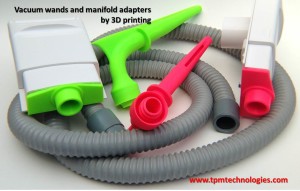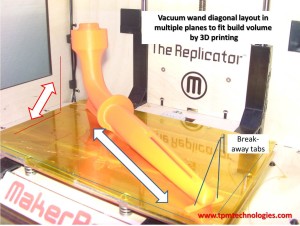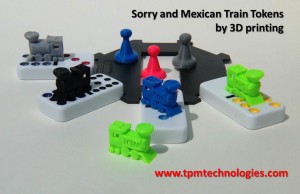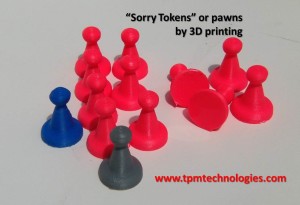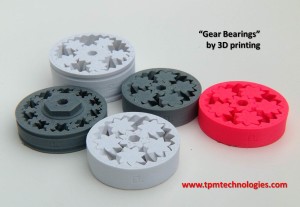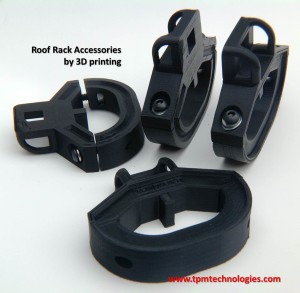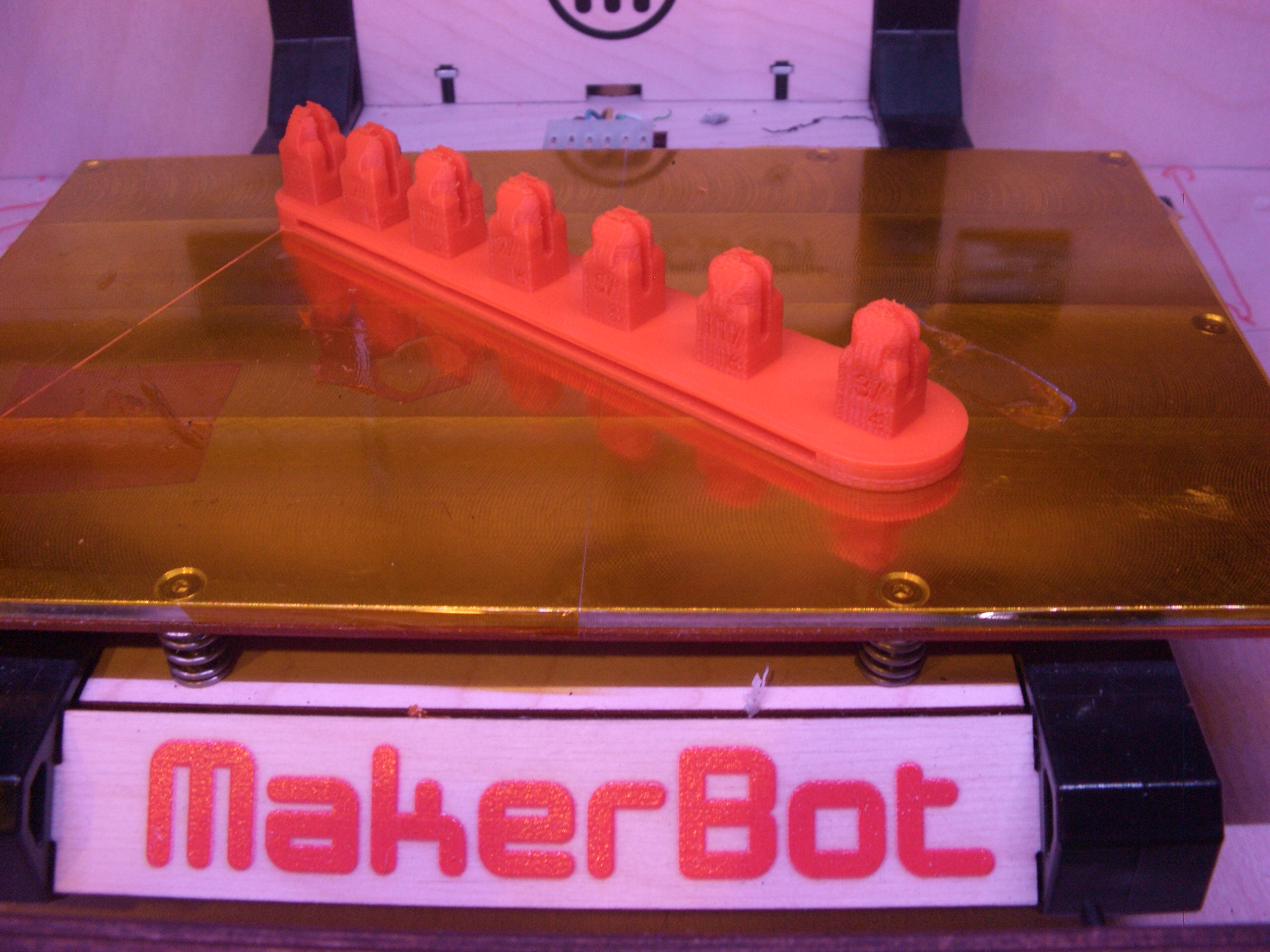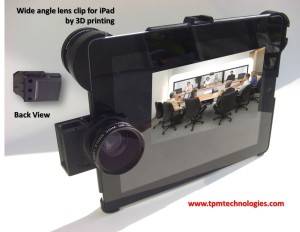 For running Skype and having a conference with many people in the room it is handy to have a wide angle lens. The Makayama iPad attachment has a lens mounting for the back camera but not the front. The Makayama iPad accessory holds lenses over the built-in cameras of the iPad and provides attachment points for a tripod and lights and microphones. The tripod mount is the standard 1/4″-20 mount and the light and microphone attachment points mimc the “hot-shoe” style mount of most SLR’s. We wanted a “quick” clip to put the lens in place and then be able to quickly remove it. This clip holds the 37 mm wide angle lens against the iPad screen. The back of the clip engages with the bumps on the back of the Makayama unit to keep the lens in place and aligned over the iPad’s front camera. Now the wide angle can pick up everyone in the room.
For running Skype and having a conference with many people in the room it is handy to have a wide angle lens. The Makayama iPad attachment has a lens mounting for the back camera but not the front. The Makayama iPad accessory holds lenses over the built-in cameras of the iPad and provides attachment points for a tripod and lights and microphones. The tripod mount is the standard 1/4″-20 mount and the light and microphone attachment points mimc the “hot-shoe” style mount of most SLR’s. We wanted a “quick” clip to put the lens in place and then be able to quickly remove it. This clip holds the 37 mm wide angle lens against the iPad screen. The back of the clip engages with the bumps on the back of the Makayama unit to keep the lens in place and aligned over the iPad’s front camera. Now the wide angle can pick up everyone in the room.
The clip was designed in SolidWorks and printed in ABS. The clip has extended the capability of the lens and our Studio YouTube-Mobile unit.

